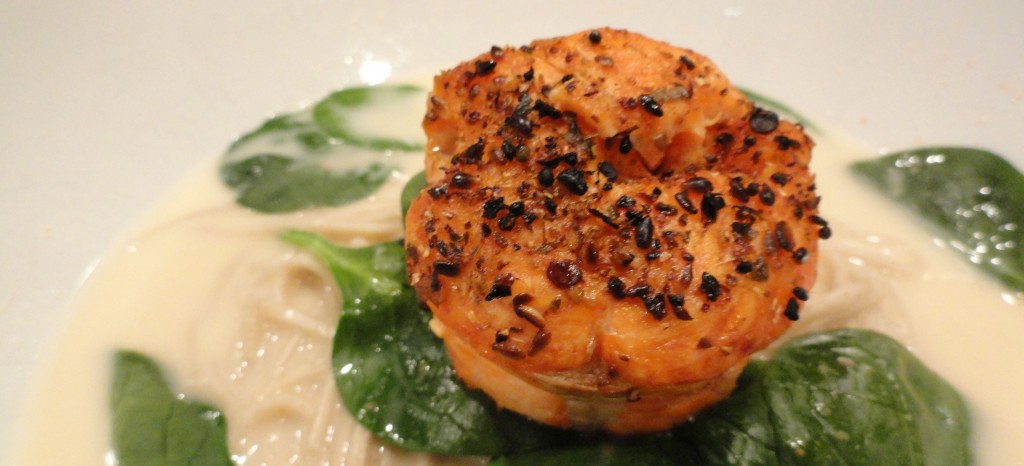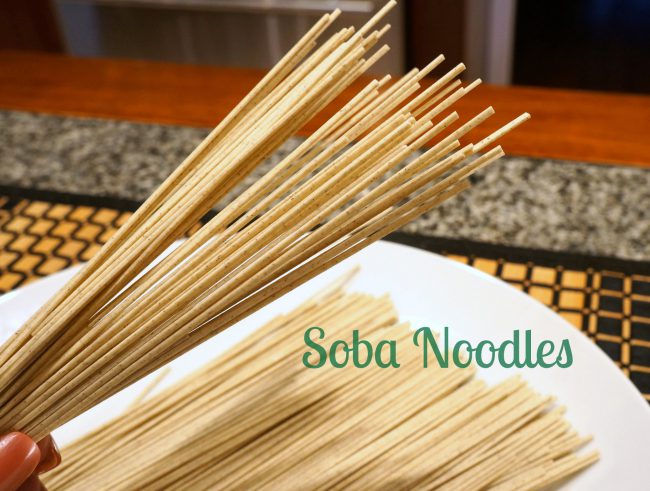This Thai Style Salmon and Noodle Soup is a light, healthy Thai-influenced soup made healthier with salmon and soba noodles, but you have options!.

How to make Thai Style Salmon and Noodle Soup
This warm, healthy Thai Style Salmon and Noodle Soup recipe is a wonderful and deliciously different way to serve salmon. As a lover of Vietnamese Pho soups, I invented this recipe after having something similar at a restaurant in San Francisco that no longer exists. Luckily I remember that soup well, so it was easy to recreate.
I use Soba noodles in this soup. Soba is made from buckwheat, which isn't wheat at all so it's naturally gluten-free. You could also use rice noodles, which would also be gluten-free, or angel hair pasta, which would not be gluten-free.

This recipe serves 2 but can easily be increased.
Here is a short video showing how to make this Thai Style Salmon Soup

Thai Style Salmon and Noodle Soup
Ingredients
- 4 cups low-sodium or homemade chicken broth
- 2 cups water
- 1 stalk lemongrass outer layer removed, thinly sliced
- 3 scallions cut into 2-inch pieces
- 1 1-inch piece fresh ginger root, thinly sliced
- 1 jalapeno pepper thinly sliced
- 1 can light coconut milk
- 1 teaspoon red or green curry paste such as Thai Kitchen or to taste
- 2 cups fresh spinach torn
- 5 basil leaves torn
- 4 ounces soba noodles cooked according to package directions (soba noodles are made of buckwheat and are a very healthy grain)
- 2 3 to 4 ounce salmon fillets, all bones removed*
- 1 teaspoon sesame oil
- Salt and pepper to taste
Instructions
- Combine the chicken broth, water, lemongrass, scallion, ginger root and jalapeno pepper in a medium saucepan. Bring to a simmer, simmer; covered, for 30 minutes. Shut off the heat and let sit for 10 minutes. Remove the aromatics with a slotted spoon. Add the coconut milk and curry paste (red if you want red curry, green if you want green curry); stir until the curry paste is dissolved. Taste, add more if you want it hotter, but LindySez, watch out, it’ll sneak up on you. Stir in the spinach and basil.
- Meanwhile, heat the broiler to high. Rub the salmon with the sesame oil and place under the broiler. Cook, without turning, about 3 – 5 minutes, you want the center to be slightly underdone as it will continue to cook when the broth is pour-over.
- In a large deep bowl, divide the soba noodles. Top with the salmon (remove the skin.) Ladle the soup over and serve with additional basil if desired.

Leave a Reply